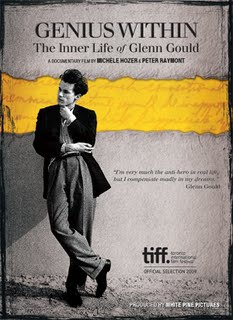Rome: Four North Americans in Two Acts
This article does do not deal with a Roman revival of Four Saints in Three Acts, the late 1920’s marvelous jewel by Virgil Thompson on a Gertrude Stein libretto. Neither does it review a two-act opera in any conventional sense. This December, four North American composers – three in their 70s and the “kid” about 55 – delighted Roman audiences with two different world premières: a 100-minute one-act children's opera by Philip Glass and a 60-minute tone poem by the MEV (Musica Elettronica Viva ensemble of live electronics, started in 1966 by Frederic Rzweski, Richard Teitelbaum and others – now including also Alvin Curran). The Glass opera is titled Le Streghe di Venezia (The Witches of Venice) and will be a central feature of the Ravenna Festival next Summer; the opera may also travel to the US. The MEV tone poem is called Grande Raccordo Anulare (The Beltway) and will have concert performances in North America. The link between the opera and the tone poem is that they both mirror visions of Italy (as it was) by contemporary American composers.
Le Streghe di Venezia is bas
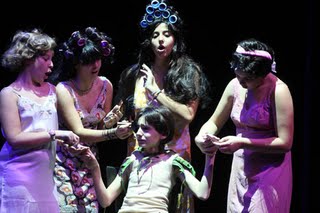 ed on a short novel by Beni Montresor, for several years a key figure of the New York City Opera. An opera-ballet version was presented at La Scala in December 1995, but the original composition was largely modified and not in line with Glass’ intentions. The Roman version is produced by Musica per Roma in the Parco della Musica and mirrors very closely what Glass wanted. The text can be read in several ways: an initiation process of two children to end up on Venice’s throne (e.g. a modern Mozart’s Magic Flute), a Christmas tale (such as Menotti’s Ahmal and the Night Visitors), the fatigue of an old king in a rapidly changing world (like in Berio’s Un Re in Ascolto), the intrigues of both the political and the performing arts’ environment (as in Strauss’ Capriccio). The final aria, by the chamber maid, is sad (La vita è difficile) but with glimmers of hope (un pò di vino rosso fa cantar): in short, life is difficult but a little red wine makes you sing happily. Le Streghe is quite interesting musically: Glass’ minimalism includes also quotations from Mozart and Rossini as well as a bit of live electronics.
ed on a short novel by Beni Montresor, for several years a key figure of the New York City Opera. An opera-ballet version was presented at La Scala in December 1995, but the original composition was largely modified and not in line with Glass’ intentions. The Roman version is produced by Musica per Roma in the Parco della Musica and mirrors very closely what Glass wanted. The text can be read in several ways: an initiation process of two children to end up on Venice’s throne (e.g. a modern Mozart’s Magic Flute), a Christmas tale (such as Menotti’s Ahmal and the Night Visitors), the fatigue of an old king in a rapidly changing world (like in Berio’s Un Re in Ascolto), the intrigues of both the political and the performing arts’ environment (as in Strauss’ Capriccio). The final aria, by the chamber maid, is sad (La vita è difficile) but with glimmers of hope (un pò di vino rosso fa cantar): in short, life is difficult but a little red wine makes you sing happily. Le Streghe is quite interesting musically: Glass’ minimalism includes also quotations from Mozart and Rossini as well as a bit of live electronics.The Roman produ
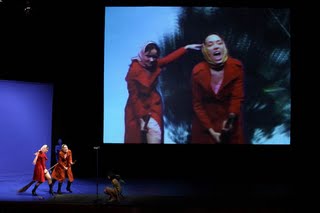 ction is also a joy for the eyes: in a small theatre for 700 seats, computerized projections, mimes, acrobats and glittering, colourful costumes make the audience feel that a feast is going on. The stage direction (Giorgio Barberio Corsetti) is fast: although the performance starts at 9 p.m. and ends at nearly 11 p.m., the many children in the audience followed the plot with interest and enjoyed the show. Among the voices, worth mentioning are Carmen Romeu, Anna Goryacheva and two children: Matteo Graziani and Francesco Passaretti alternate in the role of the boy and Maria Luisa Paglione and Daniela Sbrigoli in that of the girl. The Contemporanea Ensemble del Parco della Musica is of high quality.
ction is also a joy for the eyes: in a small theatre for 700 seats, computerized projections, mimes, acrobats and glittering, colourful costumes make the audience feel that a feast is going on. The stage direction (Giorgio Barberio Corsetti) is fast: although the performance starts at 9 p.m. and ends at nearly 11 p.m., the many children in the audience followed the plot with interest and enjoyed the show. Among the voices, worth mentioning are Carmen Romeu, Anna Goryacheva and two children: Matteo Graziani and Francesco Passaretti alternate in the role of the boy and Maria Luisa Paglione and Daniela Sbrigoli in that of the girl. The Contemporanea Ensemble del Parco della Musica is of high quality.MEV has a long history: the ensem
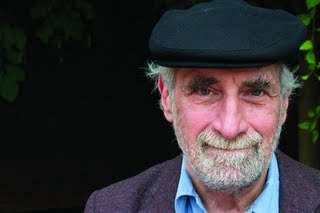 ble was begun one evening in the spring of 1966 by Alan Bryant, Alvin Curran, Jon Phetteplace, Carol Plantamura, Frederic Rzweski (pictured here), Richard Teitelbaum and Ivan Vandor in a room in Rome overlooking the Pantheon. At that time, the Italian capital was a major center for American musicians abroad – more important than Paris and London. To fully grasp the spirit of the time, it is useful to read Marjorie Whright's The Rise and Fall of a La Scala Diva (Janus Publishing Company Ltd, London 2007).
ble was begun one evening in the spring of 1966 by Alan Bryant, Alvin Curran, Jon Phetteplace, Carol Plantamura, Frederic Rzweski (pictured here), Richard Teitelbaum and Ivan Vandor in a room in Rome overlooking the Pantheon. At that time, the Italian capital was a major center for American musicians abroad – more important than Paris and London. To fully grasp the spirit of the time, it is useful to read Marjorie Whright's The Rise and Fall of a La Scala Diva (Janus Publishing Company Ltd, London 2007).In 1971, when Frederic Rzweski moved into an apartment in New York, a box containing the MEV files was mistaken for trash and thrown into the incinerator chute. Though the group would never be able to play in this remarkable domed temple with a hole in its top, MEV's music right from the start was also totally open, allowing all and everything to come in and seek in every way to get out beyond the heartless conventions of contemporary music. Taking cue from Tudor and Cage, MEV began sticking contact mics to anything that sounded and amplified their raw sounds: bed springs, sheets of glass, tin cans, rubber bands, toy pianos, sex vibrators, and assorted metal junk; a crushed old trumpet, cello and tenor sax kept us within musical credibility, while a home-made synthesizer of some 48 oscillators along with the first Moog synthesizer in Europe gave our otherwise neo-primitive sound an inimitable edge. By 1969, MEV was known everywhere in the world's undergrounds and above ground, too. They had played hundreds of concerts in Europe, made two LPs and had collaborated with Jean-Jacques Lebel, The Living Theater, Pierre Clementi, Michelangelo Pistoletto, Gianni Kounnelis, Simone Forti, members of the Chicago Art Ensembl
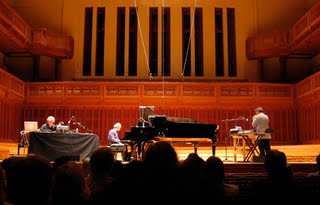 e, Cornelius Cardew's AMM group, the Scratch Orchestra, Nuova Consonanza, Vittorio Gelmetti, Giuseppe Chiari, Kosugi, Ashley, Behrman, Mumma and Lucier. MEV resists retirement and greatly enjoys its one gig a year. Its founding members have each gone on to develop very different but compatible music which in the anarchic MEV tradition stand in strong opposition to the aggressive demands of today's media and marketing moguls.
e, Cornelius Cardew's AMM group, the Scratch Orchestra, Nuova Consonanza, Vittorio Gelmetti, Giuseppe Chiari, Kosugi, Ashley, Behrman, Mumma and Lucier. MEV resists retirement and greatly enjoys its one gig a year. Its founding members have each gone on to develop very different but compatible music which in the anarchic MEV tradition stand in strong opposition to the aggressive demands of today's media and marketing moguls.The initiators of MEV returned to Rome with this brand new Grande Raccordo Anulare – a live electronics tone poem full of nostalgia for Rome in the 60s, a heartfelt homage to the city where they started their unique adventure. It's generous and moving at the same time. It was performed in the auditorium of the Università “La Sapienza” to the enjoyment of young and not-so-young live electronics.
Labels: Austin Lyric Opera, MEV, Philip Glass, Rome
